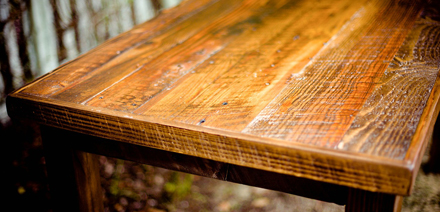MIT researchers have proposed a method to grow plant-based materials, like wood and fibre, and have demonstrated the concept by growing a culture of wood-like cells from zinnia leaves. Source: Timberbiz
It takes a lot to make a wooden table. Grow a tree, cut it down, transport it, mill it … you get the point. It’s a decades-long process. Luis Fernando Velásquez-García suggests a simpler solution: “If you want a table, then you should just grow a table.”
Researchers in Velásquez-García’s group have proposed a way to grow certain plant tissues, such as wood and fibre, in a lab. Still in its early stages, the idea is akin in some ways to cultured meat — an opportunity to streamline the production of biomaterials.
The team demonstrated the concept by growing structures made of wood-like cells from an initial sample of cells extracted from zinnia leaves.
While that’s still a long way from growing a table, the work provides a possible starting point for novel approaches to biomaterials production that ease the environmental burden of forestry and agriculture.
Ashley Beckwith is lead author and a PhD student in mechanical engineering. Coauthors are Beckwith’s co-advisors Velásquez-García, a principal scientist in MIT’s Microsystems technology Laboratories, and Jerey Borenstein, a biomedical engineer at the Charles Stark Draper Laboratory.
The researchers grew wood-like plant tissue indoors, without soil or sunlight. They started with a zinnia plant, extracting live cells from its leaves. The team cultured the cells in a liquid growth medium, allowing them to metabolize and proliferate. Next, they transferred the cells into a gel and “tuned” them.
The researchers coaxed the cells to grow a rigid, wood-like structure using a mix of two plant hormones called auxin and cytokinin. By varying the levels of these hormones in the gel, they controlled the cells’ production of lignin, an organic polymer that lends wood its firmness.
Ms Beckwith said she assessed the cellular composition and structure of the final product using fluorescence microscopy.
This procedure demonstrated that plant cells can be used in a controlled production process, resulting in a material optimized for a particular purpose.
Mr Velásquez-García sees this work as an extension of his lab’s focus on microfabrication and additive manufacturing techniques like 3D printing. In this case, the plant cells themselves do the printing with the aid of the gel growth medium.
Unlike an unstructured liquid medium, the gel acts as a scaffold for the cells to grow in a particular shape.
Mr Velásquez-García envisions the possibility of one day growing a table, no two-by-fours or wood glue necessary.
The researchers acknowledge it’s still early days for these lab-grown plant tissues — the team will keep fine-tuning the controls, like hormone levels and pH of the gel, that give rise to the final material’s properties.
Ms Beckwith also anticipates challenges in growing plant tissues at large scales, such as facilitating gas exchange to the cells. The team hopes to overcome these barriers through further experimentation and eventually build production blueprints for lab-grown products, from wood to fibres.
Download the paper at: https://www.sciencedirect.com/science/article/pii/S0959652620356171








